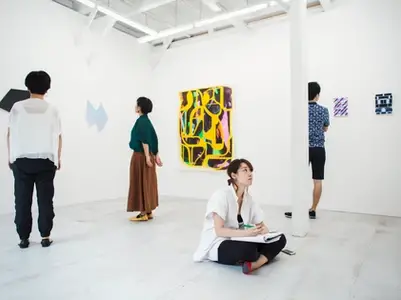We’ve all been in that hard situation in school or college where you are told to analyse a number of artworks, and you sit there not knowing.
Well, in this blog post, I’m going to give you a 4 step list of step by step guidance on how to analyse any artworks you set your eyes upon. So if you’ve been set a recent assignment to analyse some art, then this is the blog post for you.
(First things first, I need to point out that it is not analytical to say, “I like this” or “I don’t like this,” without more explanation or reasoning. Personal views must be backed up by rationale, proof, or reason.) So if this is as far as you can get in your write up, let’s change all that now.
1. Description
(This answers the question of ‘what do you see’, keep it short and sweet, with some bullet points, not a rambling mess of words. So, to start let’s just list what you can see in the piece of art.
- Objects, figures, colours, shapes, background, etc.
- A great way to help you do this that works for many, is to imagine you are trying to explain the artwork you see to a blind person.
2. Analysis
(How did the artist achieve what they did (how did they do it))
(A) Compositional Forms
- What forms are used (rounded, curved, straight-edged, or geometric forms) are utilised in this artwork?
- Is there a mix of different kinds of forms, or are they all the same?
- Are there certain areas of the composition that are filled with forms and others that are vacant, or are the forms distributed across the artwork?
- Are there any forms that are repeated throughout the artwork?
- Is the entire composition brimming with vitality and movement, or does it appear to be calm and serene? How did the artist achieve this balance of movement and stillness?
- What is the composition’s main point of interest?
- What is the artist’s method of attracting your attention to it?
(B) Use of Elements
- The subject matter is determined by identifying pictorial components, such as a historical event, allegory, mythology, and so on.
- Line, form, colour, texture, and other distinguishing traits or qualities are chosen.
- Analysis of design or composition concepts, such as stable,
- repetitive, rhythmic, unified, symmetrical, harmonic, geometric, diverse, chaotic, horizontally or vertically orientated, and so on
- The role of components or structural systems in the appearance of an image or function is discussed.
- Analysis of how light is used and how colour is used, for example, contrast, shadowed, etc.
- Real and fictitious representations of space and landscape
3. Interpretation
(What is the artist trying to convey to you, what’s happening in the artwork?)
- What do you believe the artist is attempting to convey with this piece of art? What does this imply?
- What is the piece’s major topic or concept?
- What would you be feeling/thinking if you were inside this work of art?
- Is there a narrative in the artwork (does it convey a storey)? Is it a religious piece of art?
- Is it a metaphor? Is it feasible? Why?
- What would you say about this piece of art if you had to explain it to someone else?
- What evidence do you have, both inside and outside the artwork, that supports your interpretation?
4. Evaluation
(What do you think about the artwork, did the artist achieve what they were trying to convey to you?)
- Use aesthetic ideas to aid in your evaluation.
- Is it an excellent piece of art?
- Criteria: What are the most acceptable criteria for assessing the artwork, in my opinion?
- What evidence is there inside or outside the artwork that pertains to each criterion?
- What is my opinion on the quality of the artwork, based on the criteria and evidence?
ALWAYS MAKE SURE THAT WHEN EVALUATING THE WORK, YOU ALWAYS GIVE REASONING BEHIND WHAT YOU SAID, AND WHY YOU SAID IT.

























